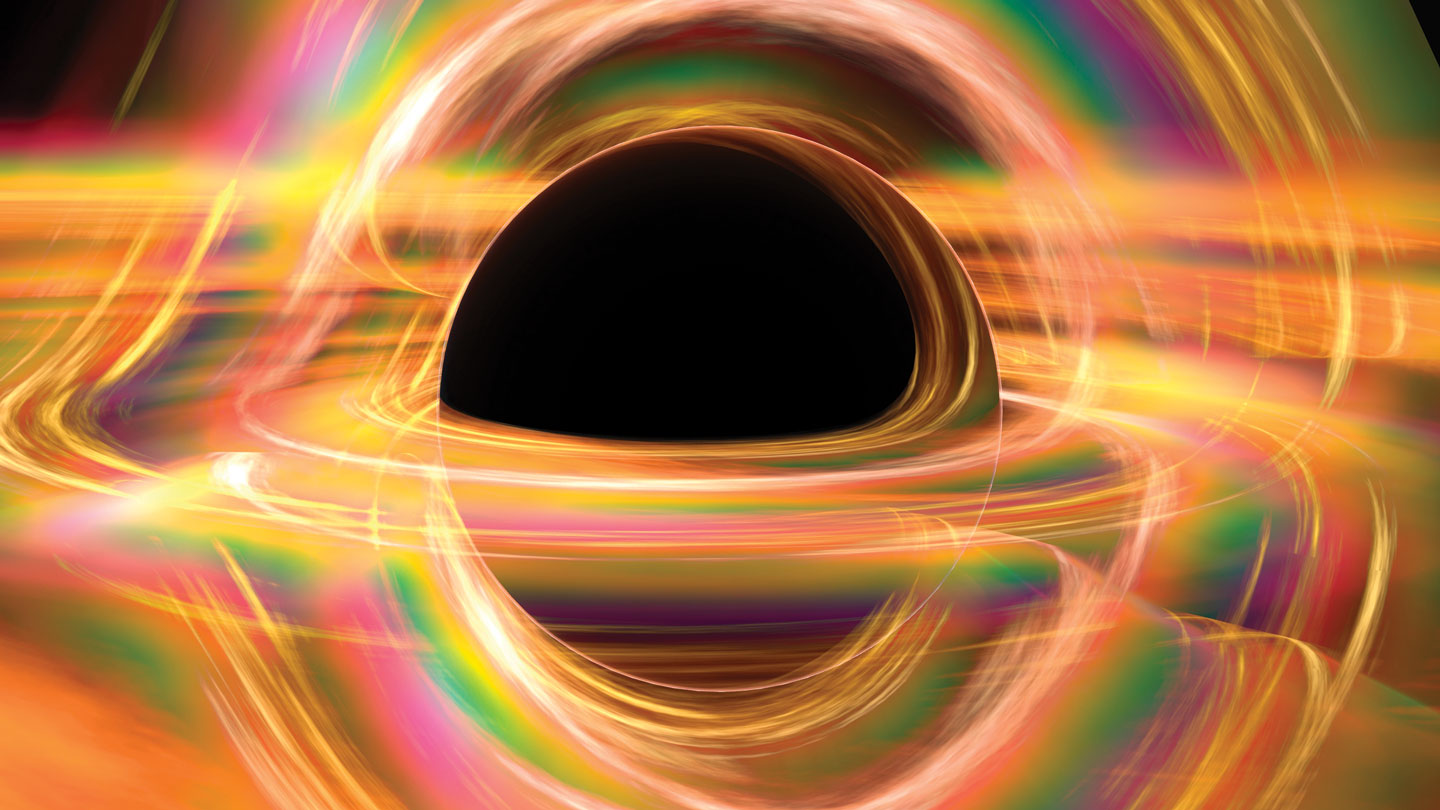Strange black holes might expose insider secrets of the early universe

antenna: (plural: antennae or antennas) (in physics) Products for picking up (obtaining) electromagnetic electrical power.
array: A wide and organized group of objects. In some cases they are instruments positioned in a systematic fashion to gather data in a coordinated way.
astronomer: A scientist who will work in the subject of investigation that bargains with celestial objects, house and the physical universe.
astrophysicist: A scientist who works in an place of astronomy that offers with comprehending the actual physical character of stars and other objects in space.
black hole: A region of space possessing a gravitational field so intense that no subject or radiation (together with mild) can escape.
colleague: Another person who will work with another a co-worker or group member.
laptop or computer model: A method that operates on a computer that results in a model, or simulation, of a true-planet feature, phenomenon or party.
main: Anything — generally spherical-shaped — in the heart of an object.
cosmic: An adjective that refers to the cosmos — the universe and every thing within it.
galaxy: A team of stars — and usually invisible, mysterious dim subject — all held with each other by gravity. Giant galaxies, these types of as the Milky Way, typically have much more than 100 billion stars. The dimmest galaxies may have just a couple of thousand. Some galaxies also have fuel and dust from which they make new stars.
gravity: The drive that attracts just about anything with mass, or bulk, toward any other detail with mass. The much more mass that something has, the bigger its gravity.
laser: A product that generates an intensive beam of coherent light of a solitary colour. Lasers are used in drilling and chopping, alignment and guidance, in info storage and in medical procedures.
light-calendar year: The length light travels in just one yr, about 9.46 trillion kilometers (virtually 6 trillion miles). To get some thought of this length, imagine a rope prolonged sufficient to wrap all around the Earth. It would be a tiny around 40,000 kilometers (24,900 miles) very long. Lay it out straight. Now lay another 236 million a lot more that are the very same duration, finish-to-conclude, ideal after the 1st. The whole distance they now span would equal 1 light-calendar year.
mass: A number that demonstrates how significantly an object resists dashing up and slowing down — basically a measure of how much make any difference that object is produced from.
matter: One thing that occupies area and has mass. Anything on Earth with make a difference will have a home explained as “fat.”
Milky Way: The galaxy in which Earth’s photo voltaic process resides.
model: A simulation of a genuine-globe celebration (generally applying a personal computer) that has been formulated to predict a single or a lot more probably results. Or an unique that is meant to display how a thing would do the job in or search on others.
observatory: (in astronomy) The creating or composition (these kinds of as a satellite) that homes just one or more telescopes. Or it can be a system of structures that make up a telescope advanced.
outliers: Functions or circumstances that drop outside some usual vary. That makes them strange and may make them seem unlikely or suspicious.
radiation: (in physics) A person of the a few key methods that power is transferred. (The other two are conduction and convection.) In radiation, electromagnetic waves have power from a person put to an additional. Compared with conduction and convection, which need content to assist transfer the vitality, radiation can transfer electricity throughout empty house.
radio: Referring to radio waves, or the device that receives these transmissions. Radio waves are a section of the electromagnetic spectrum that persons often use for long-distance interaction. Extended than the waves of seen light, radio waves are made use of to transmit radio and tv indicators. They also are applied in radar. Many astronomical objects also radiate some of their vitality as radio waves.
relic: Anything that is a leftover from an earlier time.
rogue: An animal that wanders by yourself, outside the house its herd or the local community into which it was born. Or anything at all, even a world or galaxy, that unexpectedly travels by itself and much from the place it would be expected.
star: The essential constructing block from which galaxies are built. Stars develop when gravity compacts clouds of gasoline. When they become warm sufficient, stars will emit light and from time to time other kinds of electromagnetic radiation. The solar is our closest star.
sunshine: The star at the heart of Earth’s solar program. It is about 27,000 light-weight-decades from the heart of the Milky Way galaxy. Also a phrase for any sunlike star.
know-how: The software of scientific understanding for practical functions, in particular in business — or the equipment, procedures and systems that end result from all those efforts.
telescope: Generally a light-weight-accumulating instrument that helps make distant objects show up nearer via the use of lenses or a mixture of curved mirrors and lenses. Some, nevertheless, collect radio emissions (electricity from a different portion of the electromagnetic spectrum) by means of a network of antennas.
idea: (in science) A description of some facet of the organic planet dependent on substantial observations, checks and rationale. A idea can also be a way of arranging a wide overall body of awareness that applies in a broad vary of circumstances to explain what will materialize. Contrary to the typical definition of principle, a theory in science is not just a hunch. Strategies or conclusions that are dependent on a principle — and not but on organization info or observations — are referred to as theoretical. Scientists who use arithmetic and/or current knowledge to challenge what may transpire in new predicaments are acknowledged as theorists.
universe: The complete cosmos: All factors that exist through place and time. It has been growing since its development through an event known as the Big Bang, some 13.8 billion yrs ago (give or get a few hundred million many years).
X-ray: A style of radiation analogous to gamma rays, but owning considerably reduced power.






